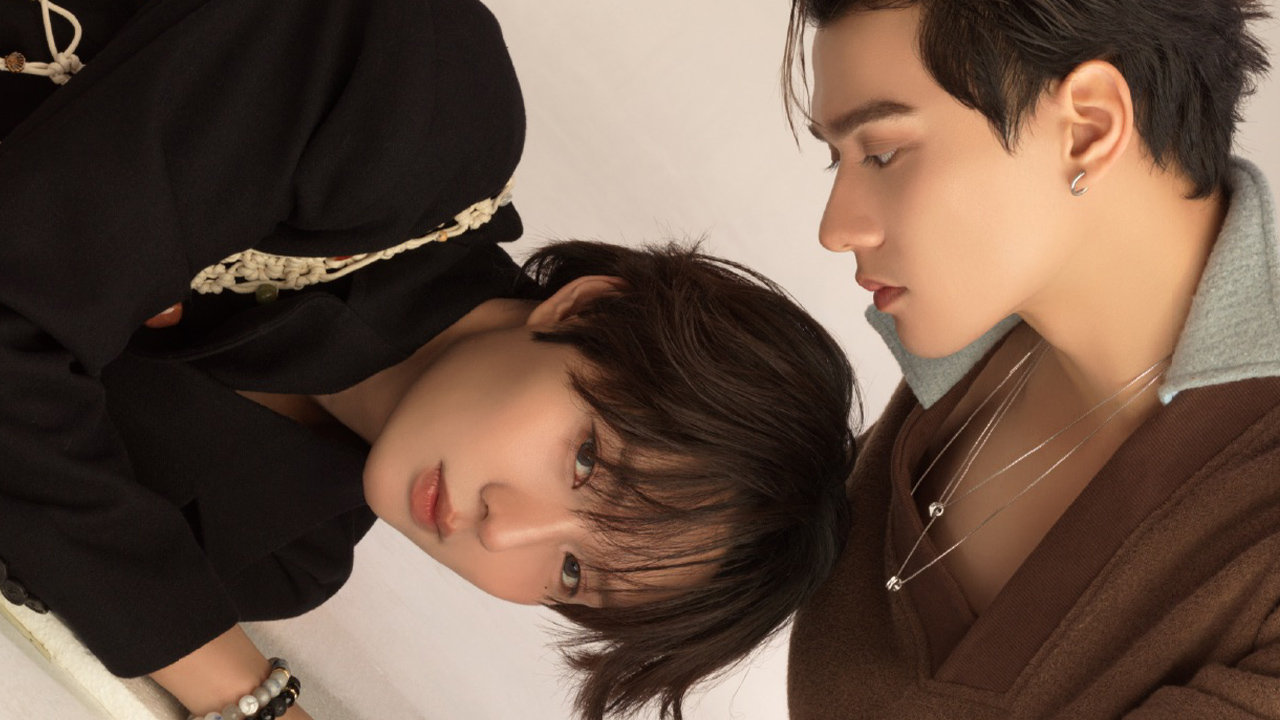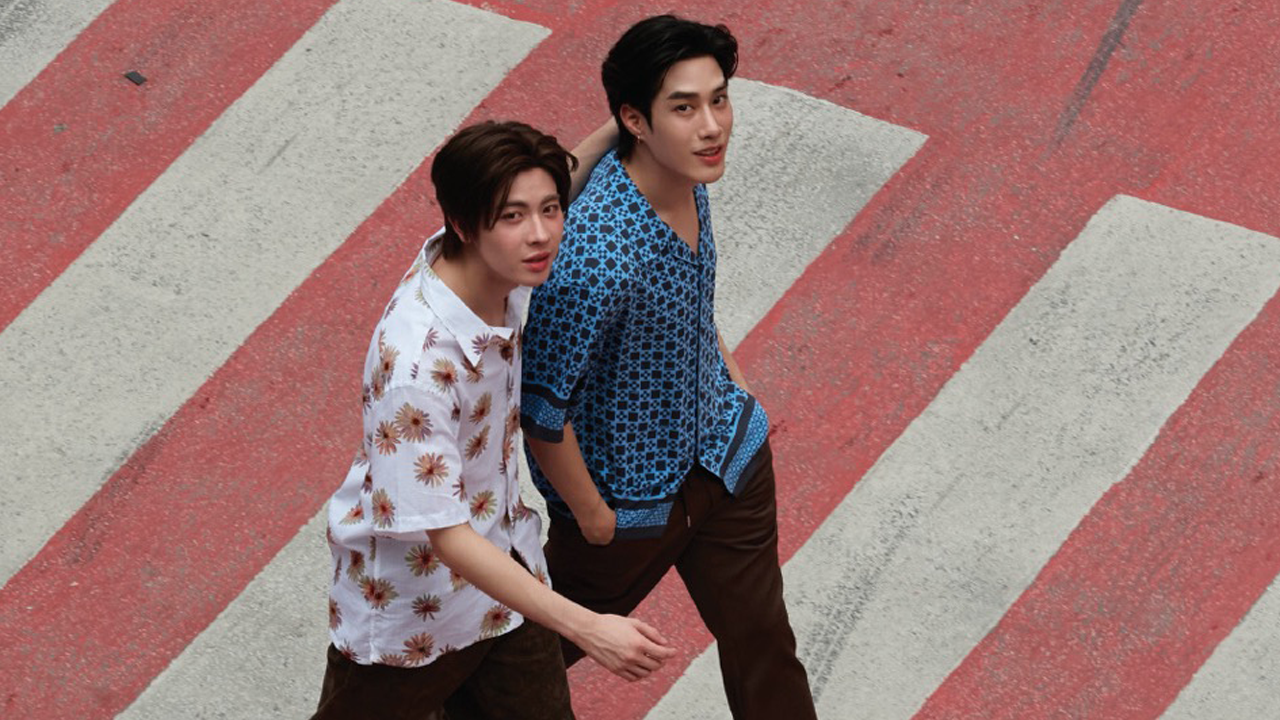Reviewed by @kaimanit
It began with a book “The Eye of Love” by Swiss photographer René Groebli. The black-and-white photographs of his wife, Rita, taken during their honeymoon in 1954, became one of the most intimate visual diaries in photographic history. Rita’s body, bare yet never provocative, possessed power through her calm awareness of being seen. It was beauty not of display, but of touch, the truth of fabric, the language of skin.
Two months before the show, Sarah Burton picked up that book and found what she had been searching for. “I wanted to strip the clothes of all their structure and see what was left inside,” she said backstage at Givenchy’s Spring–Summer 2026 show on Friday night. “I’ve always been used to garments with shoulders, with weight, with construction. Removing that meant learning all over again.” And that became the heart of Givenchy SS26, dismantling structure to rediscover the soul of womanhood.
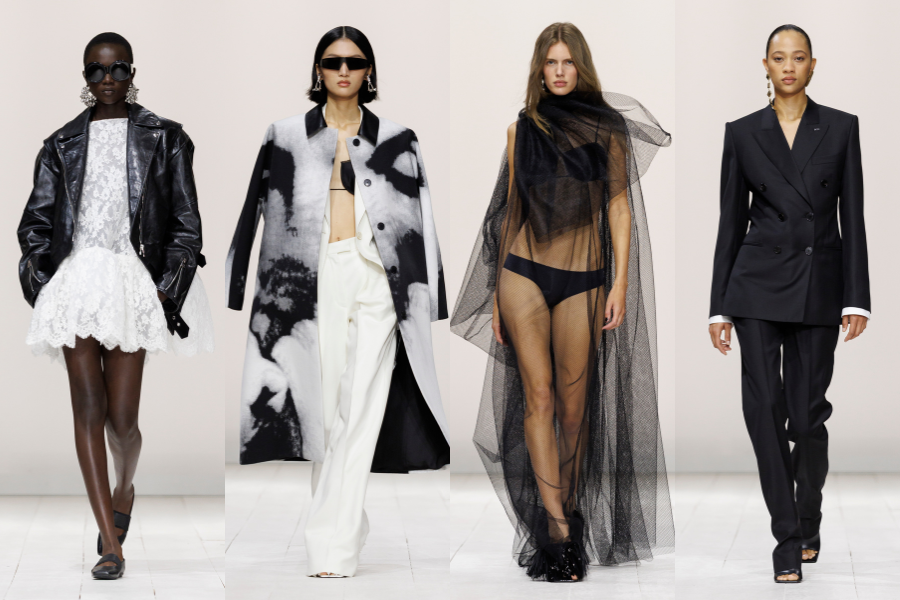
The runway opened in silence. A white shirt appeared like a poem, sometimes in leather, sometimes twisted into a wrap skirt, sometimes slipped from the shoulders to reveal a fine bra strap. Under the light, that plain white shirt turned enigmatic: gentle yet powerful, like a woman aware of her quiet strength. Burton called it “peeling back the structure of tailoring.” Jackets were stripped of canvas and softened to the weight of a cardigan. A tuxedo jacket once rigid now slipped off the shoulders, its lapels peeled back to expose the collarbone. For Burton, it was a new language of power, one that stems not from hardness, but from softness. She intentionally questioned the long-held idea that a woman must borrow masculine codes to appear strong. “Instead of using male archetypes, I wanted to explore how women can feel powerful through feminine archetypes,” she said.
That answer took form in a wrap skirt that sat low on the waist yet felt entirely couture; in sheer mesh second-skins with a whisper of fetish; in bodysuits paired with razor-sharp needle heels that spoke of body confidence; and in a coat printed with Marilyn Monroe’s face from Bert Stern’s final sitting before her death, reimagined not as a symbol of tragedy, but as a woman who chose her own exposure.
“There’s a fear of women who want to feel sexual,” Burton said candidly. “But I can really feel the sexuality in this. It’s not objectified, it’s alive.” And in every stitch of this collection, that pulse was tangible.
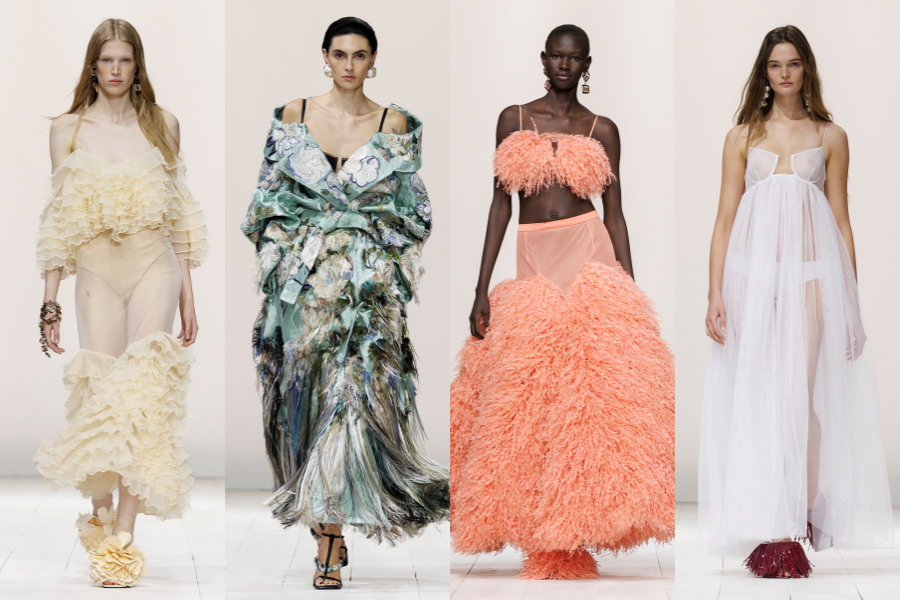
One of the most memorable moments came when a model walked out in a white wrap shirt and a loosely structured jacket, recalling the kind of “effortless sensuality” Donna Karan pioneered in the 1980s, women designing for women, sensuality born from comfort in one’s own body rather than from the gaze of others.
The spirit of couture remained embedded in every detail: a pale blue off-the-shoulder coat embroidered with silk threads that unraveled into an ombré fringe; a white gown that looked like a bedsheet yet was meticulously hand-beaded; and a peach bralette paired with a voluminous ball skirt that appeared feathered but was, in fact, plumes of chiffon torn by hand. Each piece spoke more about the touch of the hand than the perfection of craftsmanship.
In terms of brand direction, Burton has done exactly what she said she would, giving clarity to the Givenchy woman. “Because it’s been a lot of things,” she explained, “it’s important to define her silhouette clearly from the start.” Now that silhouette has crystallized: the wrapped shirt, the low-slung skirt, the open-shoulder coat, the soft exposure of skin.
Beyond the artistry, the business signals were just as compelling. Four out of the ten most-saved images on Vogue Runway for Fall 2025 came from her debut Givenchy show. This season, many front-row guests arrived wearing pieces from that very collection, especially the pale yellow duchesse satin caban with a black belt, now an instant classic. Such early and visible brand adoption is rare for a heritage house. Social engagement told the same story: Givenchy’s Instagram saw a 30% surge in interactions within 48 hours post-show, while searches for “wrap shirt” and “bare bejeweled top” spiked across resale and fashion content platforms.
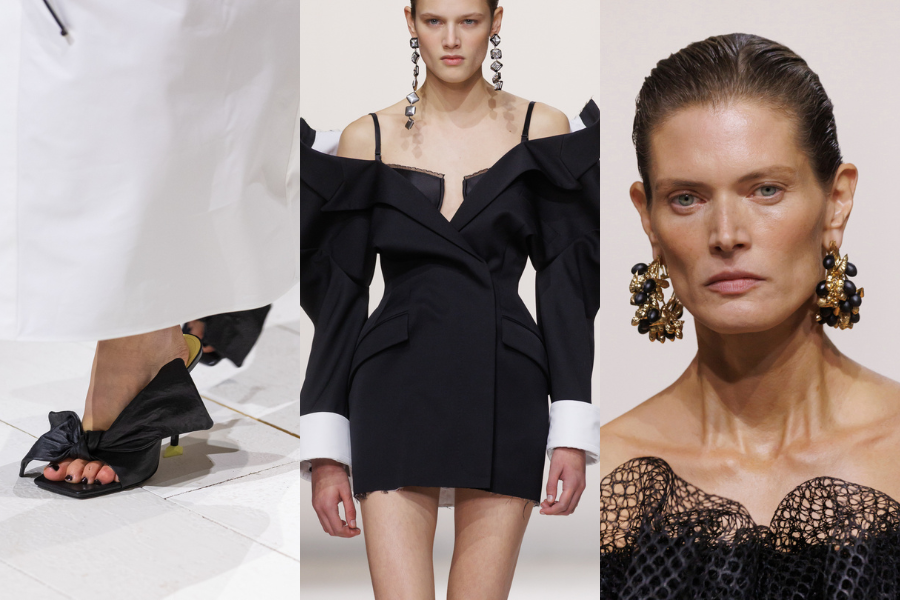
This show not only built upon Burton’s artistic success but also cemented the brand’s strategic trajectory, redefining the Givenchy silhouette as a visual asset and aligning it with a narrative of powerful femininity that resonates emotionally, not just aesthetically.
When the applause finally broke out and Burton stepped forward for her bow, she quietly asked, “How do I get the pagan into Givenchy?” It was an unexpected question from the former creative force of Alexander McQueen, but perhaps the one that best captures her mission: to pull Givenchy out from the shadow of perfection and into a world where femininity is no longer confined by politeness.
Under Burton, Givenchy has become less about being seen and more about being felt, returning to a kind of love unarmed by fashion’s rigid codes. These are clothes that tremble with emotion, not logos.
And perhaps that is the answer the fashion world has been searching for all along: how to make a woman feel powerful without asking her to become someone else.
Sarah Burton hasn’t just designed a beautiful collection, she has rewritten the conversation between women and their clothes.




